Hundreds of thousands of anglers visit Central America every year to experience the fishing trip of a lifetime. Many of them come here to go offshore fishing and take their shot at a trophy marlin or sailfish while others stay inshore to chase down the exotic roosterfish or beloved tarpon. We also get plenty of experienced anglers who specifically ask for us “meat trips” – those focused solely on targeting fish to eat and/or bring back home. Whether you are trying to fill your cooler or just love the idea of catching your own dinner, there are plenty of edible species that you are able to bring to the gaff and enjoy for a fresh seafood dinner. Below is our list of the six tastiest fish in Central America and where to find them.
Which Fish in Central America Are Catch-And-Release?
In Costa Rica, Panama, and Guatemala all billfish are strictly catch-and-release by law. Unfortunately, they are still legal for local consumption so sometimes you’ll still see local places serving marlin ceviche tragically, but you won’t find it on our list of the six tastiest fish in Central America. Inshore species like roosterfish and tarpon are so revered for their fighting ability that 95%+ of them are released so they live to fight another day, plus it doesn’t hurt they are not generally regarded as good table fare. Belize became the first country in the world to make into the law the catch-and-release of all bonefish, permit, and tarpon back in 2008. We also strongly encourage you to release all Cubera Snapper. The biggest of the snapper species caught in Central America, it’s also the most popular to fish for and slowest growing. Cubera snapper can live to be 60-70 years old and typically grow 1-2 lbs a year, so a 50 lb trophy fish may be as old as you! More and more operations are releasing them so they can live another day and be enjoyed by future anglers.
6) Snook
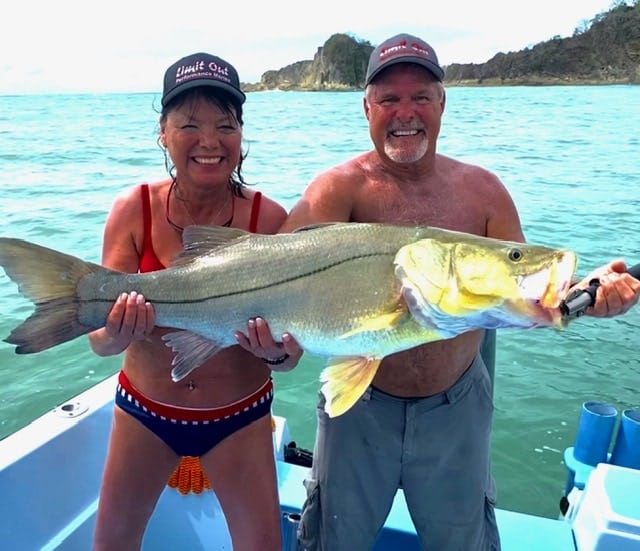
First on our list of the six tastiest fish in Central America may be a bit of a surprise as not snook isn’t a high value fish in all countries. This versatile fish can be found on both the Atlantic and Pacific Ocean in fresh water, brackish water, or salt water. In fact, there are five different species of snook we catch in Central America. Although there are several different sub-species of snook, they all showcase the prominent black lateral line that is the snook’s calling card. It’s a favorite for inshore anglers all around the world as it offers big surface strikes on anything from poppers to spoons to flies and once hooked often takes to the air in an effort to throw the hook. Snook meat is tender and white, which makes it great for dishes like ceviche and will taste delicious pan fried with as little as salt, pepper, and olive oil.
Favorite Ways to Enjoy Snook: Ceviche, Blackened, Fried
Best Places to Catch Snook: Snook are most often found in and around the river mouths while inshore fishing in Costa Rica. This can be done on Pacific or Atlantic. Snook are regularly caught on Lake Gatun in the Panama Canal, though they are smaller and we generally try to release them. Snook can also be caught while fly fishing in Belize as they are found in mangroves, lagoons, and occasionally out at the flats chasing bait.
5) Snapper
Like snook, snapper (‘pargo‘ in Spanish) can be found on both coasts and in brackish water, inshore fishing near mangroves & reefs, or bottom fishing several miles out. There are countless species of snapper, but they all have one major thing in common – they are tasty. Red snapper, mutton snapper, mangrove and cubera snapper are the favorites – though fortunately in recent years there is a growing movement to practice catch-and-release on cubera snapper since they have a very slow growth rate and are such a prized inshore species. As for the rest of them, as they say in Costa Rica – ‘buen provecho!’ Snapper can be cooked many different ways, some of our favorites are using a cajun rub as well as the classic garlic & lime combo, and if you are on the Caribbean Coast try it grilled. If you are going to order a whole fried fish, you can bet the chances are good it will be a snapper.
Favorite Ways to Enjoy Snapper: “Pargo Entero” (whole fried fish), Blackened, Pan fried with garlic & lime
Best Places to Catch Snapper: Red snapper, mutton snapper, and silky snapper are most often caught when bottom fishing in a few hundred feet of water. They can also be found in and around the river mouths while inshore fishing in Costa Rica or Panama. Yellow-tail snapper, a favorite catch for the ‘pargo entero’, is often caught near rocks & caves when inshore fishing in Panama. We can catch several different species of snapper when enjoying a day of reef fishing in Belize.
4) Grouper
Grouper offers some of the most tender white meat you can find on a fish. Grouper sandwiches are famous in Florida because they can be flavored so many different ways, while here in Central America they are often served blackened or fried. Grouper is one of our favorite fish to use for ceviche with it’s tender meat mixing beautifully with the vegetables and juices. There are several different kinds of grouper caught along both coasts of Central America including snowy grouper, yellow grouper, and the beautiful broomtail grouper. Most of the grouper caught along Costa Rica and Panama’s Pacific Coast are caught bottom fishing at offshore reefs and pinnacles. They all tend to behave the same way – once they engulf your bait they’ll head straight back to their hole in the rocks and so you better be rigged with adequate braided line, a rod with a backbone, and be ready to start pulling when you feel that first tug.
Favorite Ways to Enjoy Grouper: Ceviche, Blackened, Grouper Sandwiches
Best Places to Catch Grouper: The vast majority of grouper are caught when bottom fishing at reefs & pinnacles in a few hundred feet of water. This is typically done chunk baiting bonito or other baitfish, but if you have frozen squid they won’t be able to refuse it. You can catch big groupers fishing on the outside of the Mesoamerican Reef in Belize.
3) Dorado (Mahi-Mahi)
Dorado, or mahi-mahi, are one of the most iconic sport fish in the world. Their beautiful colors, acrobatic fights, and tasty meat make it a favorite for anglers across the globe. Dorado are a fast growing and plentiful fish, reaching maturity in just a few years, so they are one of the best fish to target on meat fishing trips as their population is under no threat. They also make the cut as one of the few fish that you can eat raw on the boat as sashimi with a little bit of soy sauce. In Central America, dorado is often cooked ‘al ajillo‘ with garlic, butter, and lime – bu tour personal favorite is fresh fish tacos with cilantro on top. Dorado is easy to freeze and doesn’t lose a lot of taste, so it’s a great fish to keep in your freezer at all times.
Favorite Ways to Enjoy Dorado: Ceviche, Fish Tacos, Blackened
Best Places to Catch Dorado: Dorado are caught in tropical waters literally all over the globe, and Central America is no exception. A lot of anglers focus their Costa Rica fishing vacation around sailfish and marlin, and one of the best ways to end the day is to have a dorado or two in the box for a fresh dinner. In Panama, dorado can be seen in hordes during the green season months and we see them in Guatemala as well between May and September. While Belize isn’t known as a great offshore fishing destination like it’s neighbors, it does offer lots of great mahi action once you get outside the reef.
2) Wahoo
The ever elusive wahoo… Hard to find, and harder to land, wahoo is one of our personal favorites because we rarely get to enjoy it more than once or twice a year. Wahoo are blessed with incredible speed and razor-sharp teeth, and that combo helps them avoid the gaffs of countless hungry anglers every day by blowing out reels or biting through leaders. If you are specifically targeting Wahoo you’ll want to be rigged with a wire leader, otherwise there’s an extremely high chance you’ll lose several $20 lures in the process. The pink-white meat of wahoo is some of the tastiest you’ll ever try if you are lucky enough to land one first. Wahoo are found in tropical oceans all over the world and can be caught all year round, but in Costa Rica, Panama, and Guatemala they are most plentiful in our green season of May-September. Our favorite way to eat wahoo is in steaks or chuletas, and then they can be seasoned and cooked just about any way you like. We’d tell you our secret recipe, but then it wouldn’t be a secret…
Favorite Ways to Enjoy Wahoo: Soy sauce & ginger marinade, Blackened, Breaded
Best Places to Catch Wahoo: Wahoo are most often caught when speed-trolling over pinnacles and reefs in Costa Rica and Panama. In Belize, they are found patrolling the outside wall of the Mesoamerican Reef. Panama can be a great place to target them, but plan your Panama fishing vacation for the green season months of May and September to have the best chance.
1) Yellow-fin Tuna
You guessed it, the mighty yellow-fin tuna tops our list of the tastiest fish in Central America. Tuna meat is coveted all over the world, be it blue-fin, yellow-fin, or big-eye tuna. This rich, red meat holds a natural taste unrivaled by any other fish in the ocean. There is a reason tuna is the most common fish used in sushi, and we anglers like to take it up a notch and eat it raw on the boat with nothing but soy sauce and wasabi in sashimi form. If you’ve ever been to any high-end seafood restaurant you’ve certainly seen tuna steaks or ‘something-crusted‘ tuna on the menu, probably north of $20 per plate too. If you are lucky enough to land one of the giant cows while tuna fishing in Panama you and your mates will have dinner for the week. Tuna is a true delicacy and one of the most prized catches for the entire boat. Don’t believe us? Next time you are out fishing watch the crews’ reaction when you hook a dorado versus a yellow-fin tuna. The only knock on tuna meat is that it doesn’t freeze well, but as tasty as it is why would you procrastinate in finishing it all off anyway?
Favorite Ways to Enjoy Yellow-fin Tuna: Sashimi, Sushi, Tuna Steak, Tuna Burgers, Poke
Best Places to Catch Yellow-fin Tuna: The vast majority of grouper are caught when bottom fishing at reefs & pinnacles in a few hundred feet of water. This is typically done by chunk baiting bonito or other baitfish, but if you have frozen squid they won’t be able to refuse it. You can catch big groupers fishing on the outside of the Mesoamerican Reef in Belize.
There are several honorable mentions that didn’t make our list of the six tastiest fish in Central America – such as congrio, sea bass (corvina), and even peacock bass – but the point is if you come fishing in Central America chances are you won’t go home hungry!


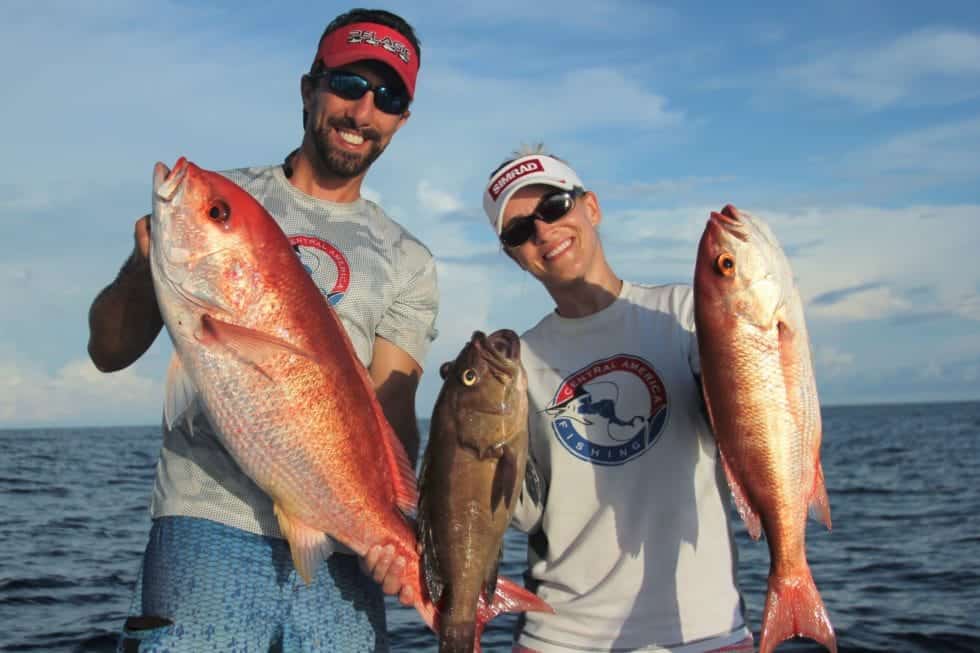
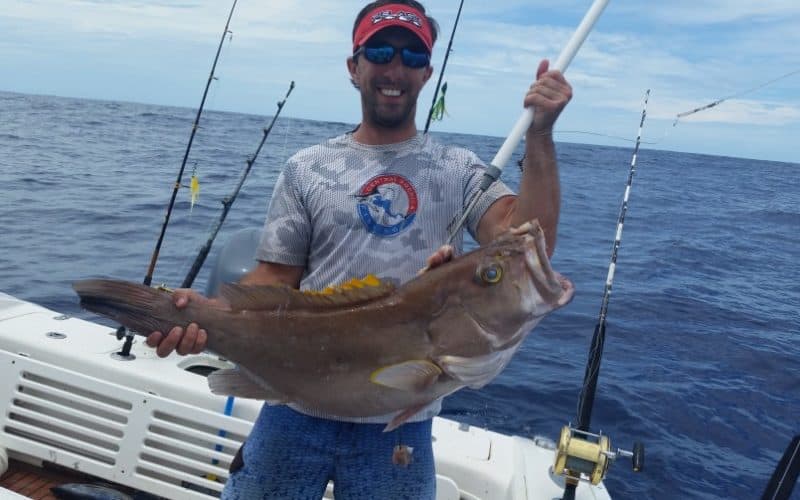
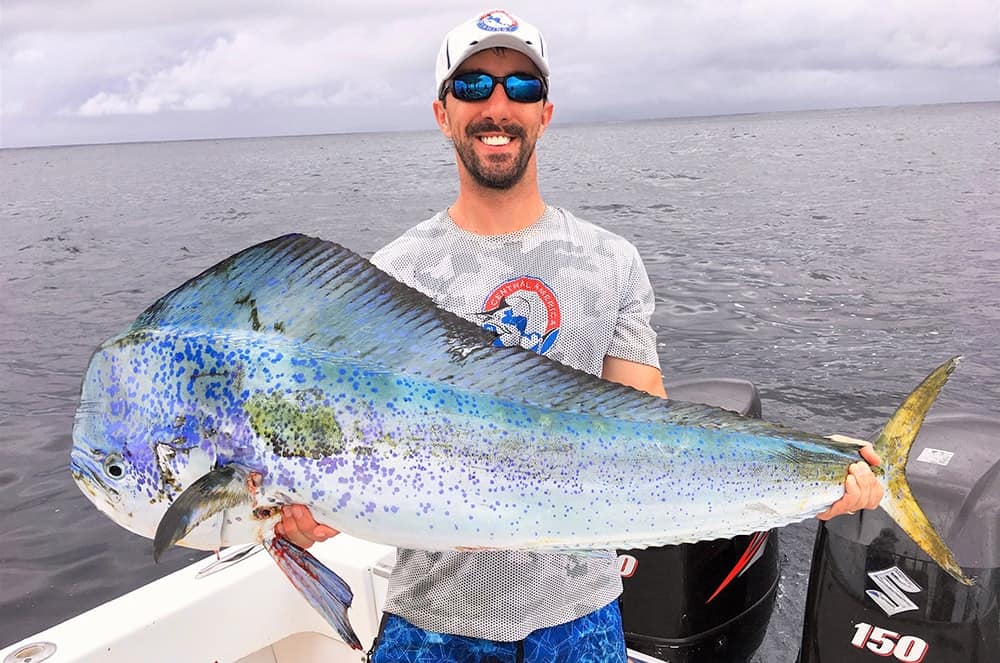
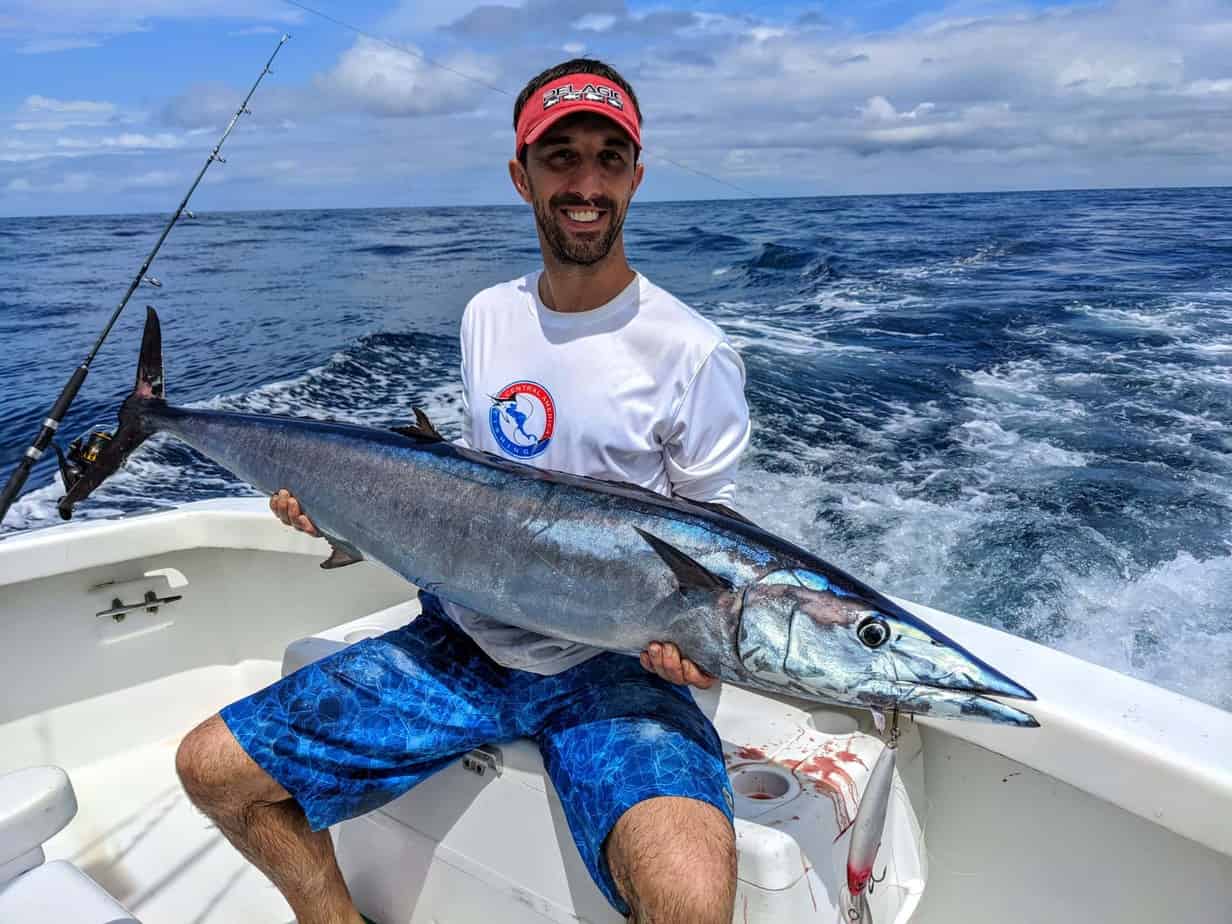
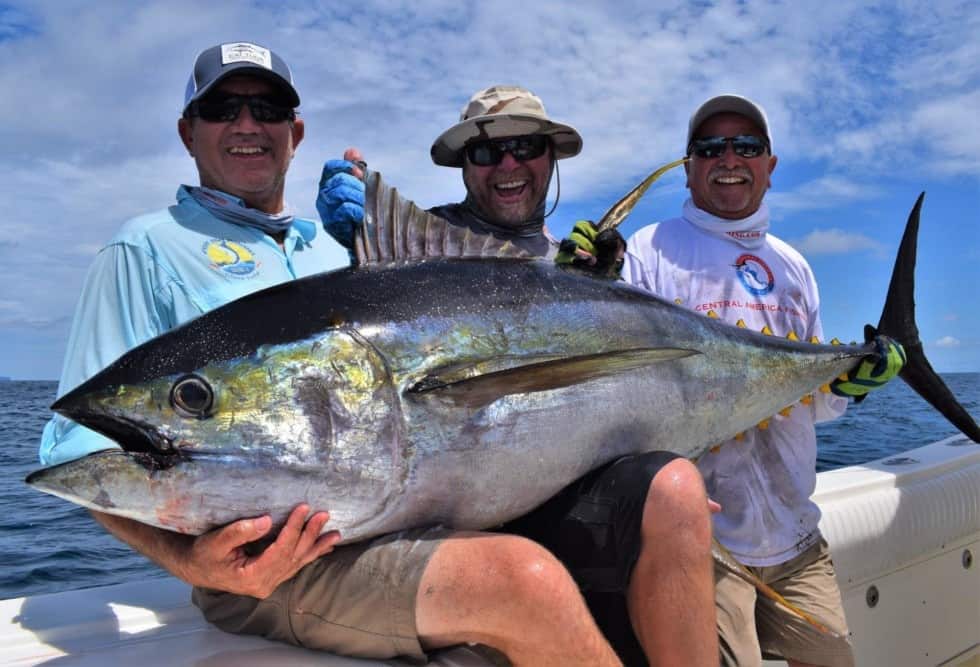

0 Comments